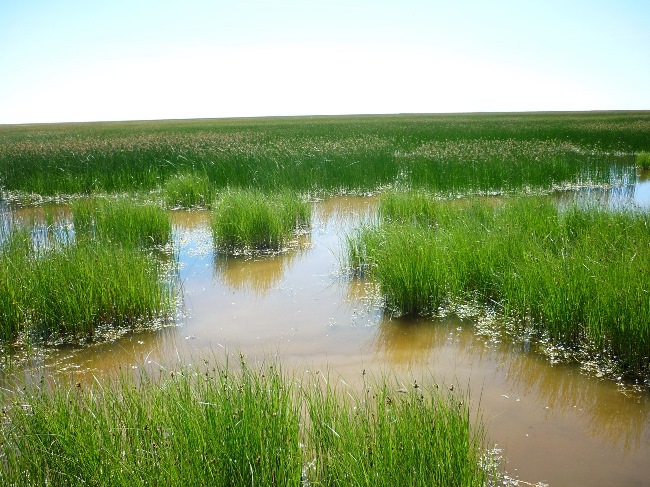Nitrogen (N) loading from anthropogenic activities is contributing to the eutrophication and degradation of wetlands worldwide. Doñana (southwestern Spain), includes a dynamic marshland protected as a UNESCO World Heritage Site, which has a catchment area exposed to increasing N inputs from intensive agriculture and poorly treated urban wastewaters. Identifying the sources of N entering this iconic wetland complex is vital for its conservation. To this end, multiyear (2014–2016), spatially-explicit data on N concentration in water samples were combined with measurements on the relative abundance of N stable isotopes (d15N) in Bolboschoenus maritimus and Typha domingensis, two dominant helophytes (i.e. emergent macrophytes) in the Doñana marsh and entry streams. Overall, plant tissues from entry streams showed higher d15N values than those from the marsh, particularly in those streams most affected by urban wastewaters. Isotopic values did not differ between plant species. Water samples affected by isotopically-enriched urban wastewaters and other diffuse organic N inputs (e.g. livestock farming) had relatively high Dissolved Inorganic Nitrogen (DIN) concentrations. In contrast, in streams mainly affected by diffuse N pollution from greenhouse crops, high DIN values were related to isotopically-depleted N sources (e.g., inorganic fertilizers). Thus, helophytes, in combination with other parameters such as N concentration in water or land cover, can be valuable indicators of anthropogenic pressures in Mediterranean wetlands. Helophytes have widespread distributions, and can be readily sampled even when water is no longer present. However, identification of specific N sources through helophyte d15N values is limited when key potential N sources are isotopically undistinguishable (e.g. fertilizers vs. atmospheric sources). informacion[at]ebd.csic.es: Paredes et al (2019) Stable isotopes in helophytes reflect anthropogenic nitrogen pollution in entry streams at the Doñana World Heritage Site. Ecol Indicators 97: 130-140. Doi 10.1016/j.ecolind.2018.10.0009
https://www.sciencedirect.com/science/article/pii/S1470160X18307702

 Open Call for Research Projects in ICTS-Doñana!
Open Call for Research Projects in ICTS-Doñana!



